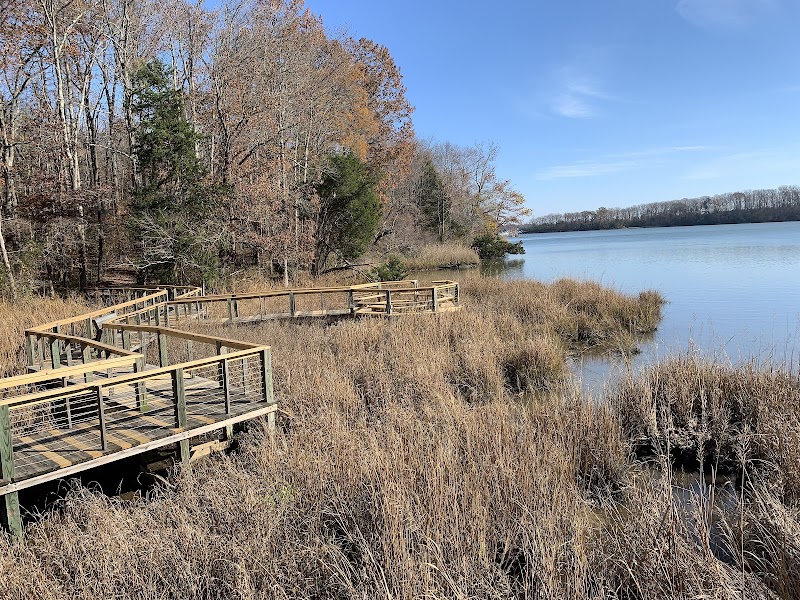
SERC Campus Preserve Adventures
SERC Campus Preserve is a 300-acre protected natural area located on the Chesapeake Bay in Edgewater, Maryland, offering diverse habitats and research opportunities along scenic waterfront trails.
About SERC Campus Preserve

The SERC (Smithsonian Environmental Research Center) Campus Preserve spans approximately 300 acres along the western shore of the Chesapeake Bay in Edgewater, Maryland. It consists of diverse coastal ecosystems including tidal marshes, upland forests, freshwater wetlands, and estuarine shoreline. The Preserve functions as a living outdoor laboratory supporting research and education focused on environmental science and the health of estuarine ecosystems. Visitors can explore a network of trails that traverse through forested landscapes and offer panoramic views of the bay and its salt marsh waterways. The Preserve is part of the larger SERC campus operated by the Smithsonian Institution, with limited public access aimed at promoting environmental stewardship and education. Wildlife such as herons, ospreys, blue crabs, and native plant species are common sights here, making it a valuable area for nature observation. While there is no developed camping or extensive recreational infrastructure, the Preserve’s quiet trails and waterfront setting attract bird watchers, photographers, and environmental enthusiasts. The area’s history is closely tied to the research mission of SERC, which since its founding in the mid-20th century has advanced understanding of coastal ecosystems critical to the Chesapeake Bay watershed. The Preserve exemplifies a balance of conservation and scientific study, providing a protected environment where restoration and monitoring projects take place. Visitors are encouraged to respect the delicate habitats, as the site remains primarily a research preserve rather than a typical recreational park.
Highlights
Waterfront trails overlooking the Chesapeake Bay and tidal marshes
Diverse ecosystems including tidal wetlands and upland hardwood forests
Opportunities for bird watching and observing estuarine wildlife
Living laboratory supporting long-term environmental research
Notable Natural Features
Chesapeake Bay Shoreline
A half-mile stretch of tidal shoreline featuring salt marshes and coastal grasses critical for local marine life.
Forest and Wetland Trails
A network of short trails through hardwood forests and freshwater wetlands offering habitat diversity.
Research Stations
Sites where ongoing environmental research and monitoring measure ecosystem health and biodiversity.
